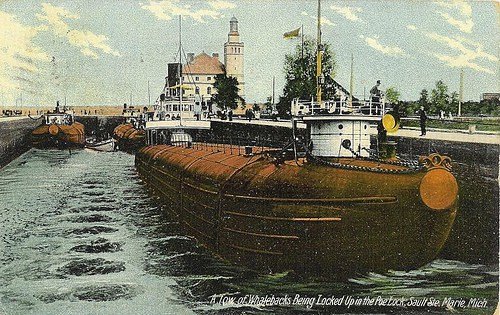
‘Pignose,’ ‘McDougall’s Folly,’ Whaleback.’ There was no shortage of uncomplimentary names for the ungainly lake freighter that appeared on the Great Lakes in 1888. Some said it was an awkward half-sunk beast while others admired its strangely futuristic lines. It definitely had elements of Victorian Steampunk in her smooth lines and easily could have been something Jules Verne or H.G. Wells designed. But it was no fantasy. The ‘Whaleback’ was a real creation that successfully carried cargo on the Great Lakes for almost 80 years.
The brains behind the whaleback freighter was a 19th century Scottish-born seaman named Alexander McDougall. He spent years on the Great Lakes battling storms and watching treacherous waves smash against the boats he sailed. One day, as the story goes, he observed a mostly submerged log and studied the way the waves rolled right over it. He incorporated this idea into a radically new hull design.
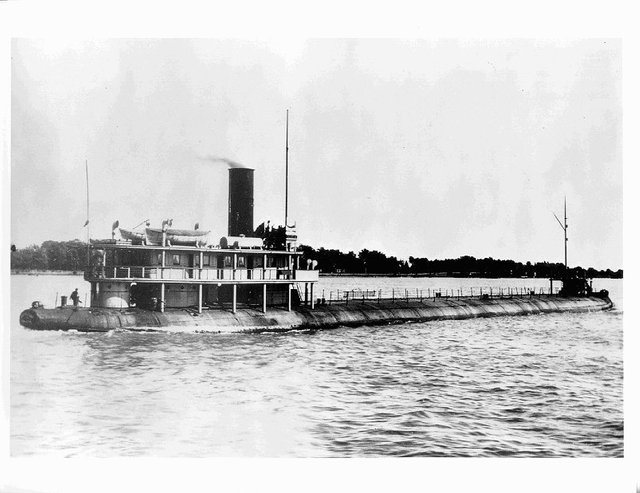
His solution was a streamlined boat with rounded hulls that would go ‘through’ the waves rather than riding over them. The cylindrical hull offered minimum resistance to both wind and water. McDougall was essentially designing a semi-submersible submarine. When fully loaded, most of the hull was submerged and the waves would roll right over the curved top deck like water over a whale’s back leading to its common nickname.
The whaleback looked like a big metal cigar with pinched up ends. The towable barge version had hawse pipes for anchors on its flattened bow, giving it the appearance of a pig’s snout.
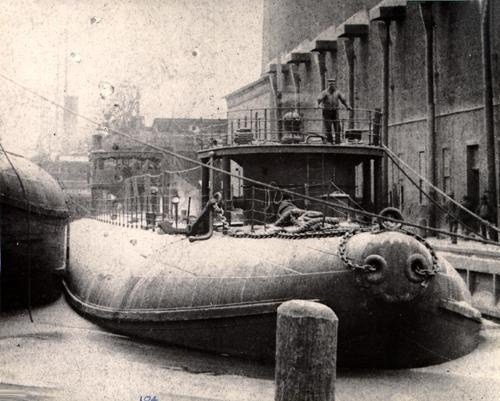
At first, McDougall was ridiculed for his crazy-looking pig-nosed boat and had difficulty finding investors. His wondrous machine was just too radical for the 1880s. McDougall perservered, using his own money to build the first few boats in Duluth, Minnesota. The new freighters proved to be not only strong and seaworthy but were also very fast for their time, sailing at 15 knots or more.
McDougall moved his ship-building operation to Superior, Wisconsin and from 1888 to 1898, constructed 43 whalebacks. Some were unpowered barges while others were independent steam-powered vessels. One of these, the Christopher Columbus, was built as a passenger vessel to ferry passengers from downtown Chicago to the Columbian Exposition in 1893. At the time, it was the longest vessel of any kind on the Great Lakes at 362 feet in length. It still holds the record for having carried more passengers than any other lake vessel.
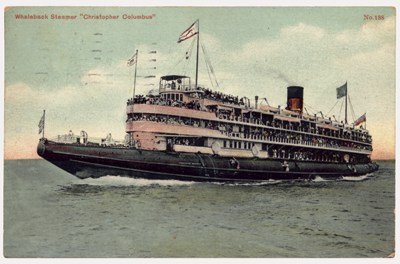
There were several innovations on these freighters. Part of the streamlining process was the rounding of turrets and superstructures. The wheelhouse was placed at the stern, opposite to most boats of the time.
The powered versions even worked well as ice breakers, allowing them to be among the first boats to move through the lakes in the spring breakup. With their upswept bows and strong engines, they were able to climb over the ice, then smash down and break through the crust.
Most of the whalebacks saw service on the lakes but a few sailed the oceans as well. The City of Everett became the first American steamship to circumnavigate the globe and was also the first to pass through the Suez Canal.
No vessel design is perfect and the whaleback had its flaws. While it handled severe weather very well, its odd shape and small hatches hindered loading and offloading times. The time gained by its fast cruising speed was lost in slow cargo transfer. The loaded boats rode so low in the water that they were difficult to see and more than once became victim to collisions. Other boats would ride right over the ‘whale’s back.’
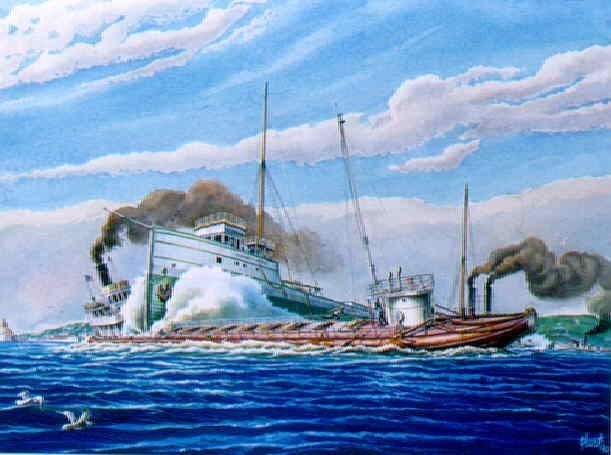
The whalebacks carried all kinds of cargo well into the mid 20th century, everything from grain and iron ore to gasoline and oil. Finally, it was their relatively small size that did them in. They couldn’t compete with the massive modern bulk lake freighters that succeeded them.
I discovered these unusual boats recently while reading about Great Lakes shipwrecks (there are three whalebacks still lying undiscovered somewhere at the bottom of the lakes.). Apart from the boats lost at sea, the rest were eventually scrapped – except for one! In Superior, Wisconsin, one survivor remains as an active museum. Excited at the prospect of seeing a real whaleback, I hopped in my car and made a pilgrimage to see the SS Meteor.
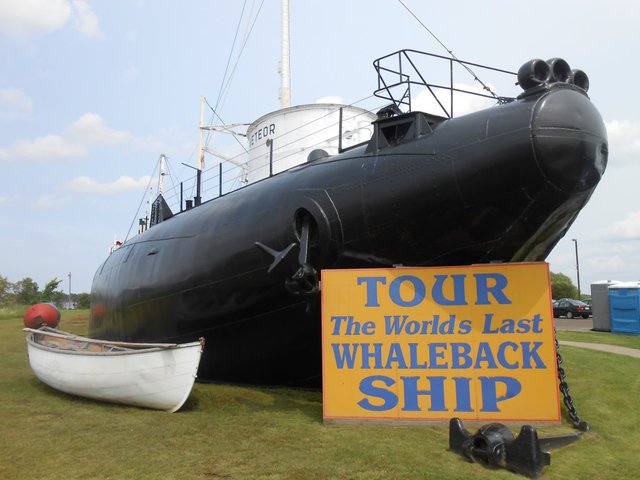
A couple of days later, I arrived to see the hulking black freighter land-berthed on the Superior waterfront. A young guide named Claire led me through the ship on an in-depth tour from the wheelhouse and captain’s and crews’ quarters down into the bowels of the ship to see the original boilers and engine. She (the boat, not Claire) is preserved nicely in her 1960s decor complete with posters outlining the procedures to take in case of nuclear attack!
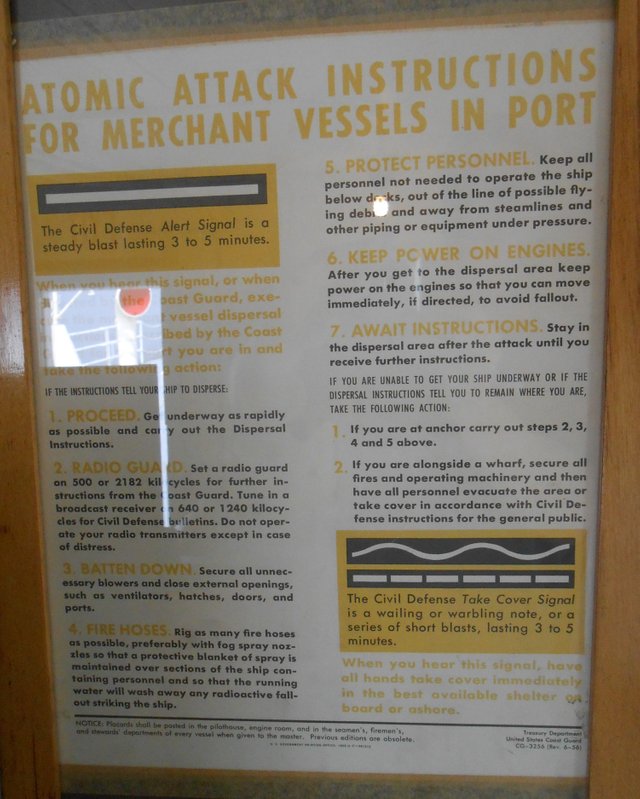
The SS Meteor was built in 1896 and delivered iron ore, grain, and even automobiles on a specially constructed topside deck. For nearly 75 years, she cruised the Great Lakes, ending her days hauling gasoline and oil. Finally, in 1969 the boat ran aground and her owners decided not to sink any more money into it. Instead, she was donated to the city of Superior where she was originally built and became a museum ship.
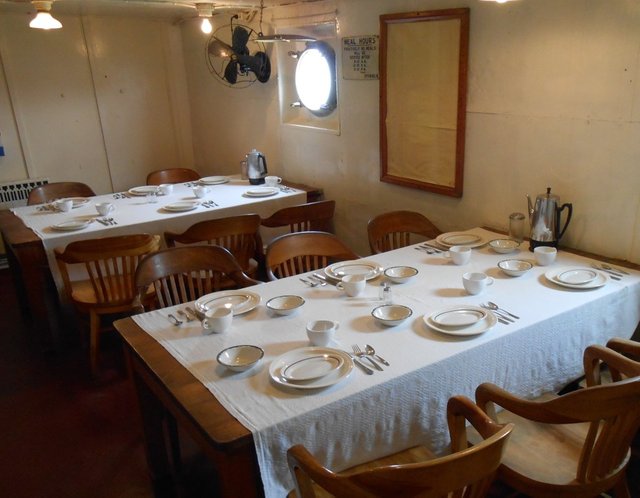
The whalebacks played an important role in the growth of the Great Lakes shipping industry and did so with a unique and memorable design. Some say that these boats were prototypes for the lake bulk carriers that still ply the lakes.
The whalebacks had their fair share of adventures and misadventures, but one peculiar incident stands out. A young boy came to watch the launch of a freshly-made whaleback with this father at Superior. The enthusiastic lad got too close to the action and was swept into the slip by the waves. Fortunately, he was rescued by a member of the Fire Department. That boy was Franklin D. Roosevelt!
really interesting post, love steampunk looking things!
Downvoting a post can decrease pending rewards and make it less visible. Common reasons:
Submit
Yes, it's the steampunk look that attracted me to these boats. Thanks for reading!
Downvoting a post can decrease pending rewards and make it less visible. Common reasons:
Submit
nice awesome follow me
Downvoting a post can decrease pending rewards and make it less visible. Common reasons:
Submit
Hi! I am a robot. I just upvoted you! I found similar content that readers might be interested in:
http://rslive.bslcore.com/article.php?aid=4031&cid=5
Downvoting a post can decrease pending rewards and make it less visible. Common reasons:
Submit
You got a 6.50% upvote from @mitsuko courtesy of @cavesson!
Downvoting a post can decrease pending rewards and make it less visible. Common reasons:
Submit
This post has received a 4.94 % upvote from @sleeplesswhale thanks to: @cavesson.
Downvoting a post can decrease pending rewards and make it less visible. Common reasons:
Submit
Great post! You just got a 8.00% upvote from @edensgarden!
Thanks for tasting the eden!
Downvoting a post can decrease pending rewards and make it less visible. Common reasons:
Submit
You got a 5.83% upvote from @brupvoter courtesy of @cavesson!
Downvoting a post can decrease pending rewards and make it less visible. Common reasons:
Submit
Thanks! Yes, steampunk is fantastic!
Downvoting a post can decrease pending rewards and make it less visible. Common reasons:
Submit